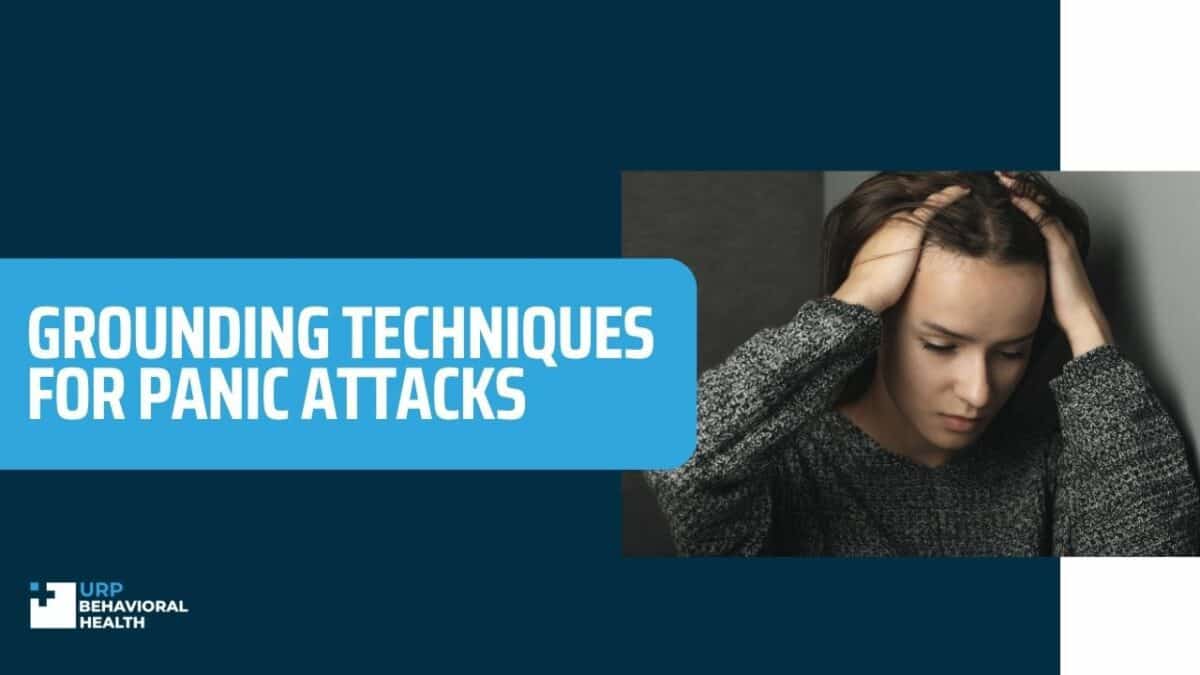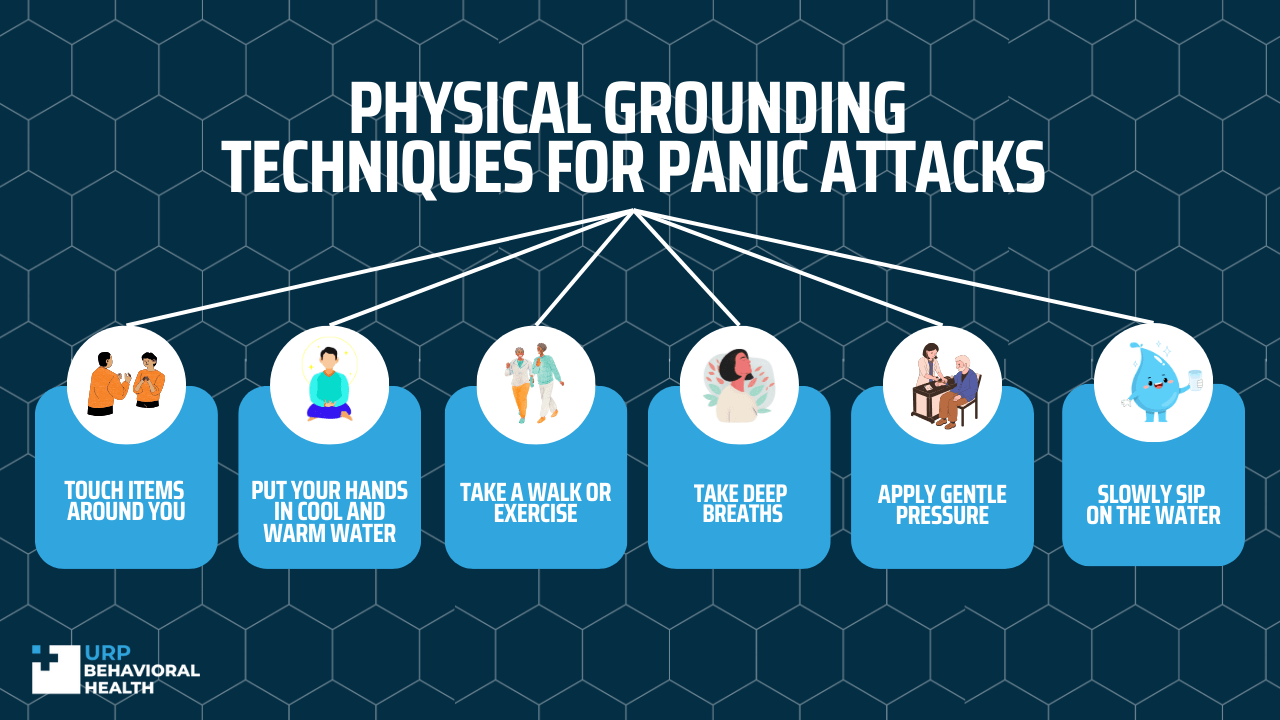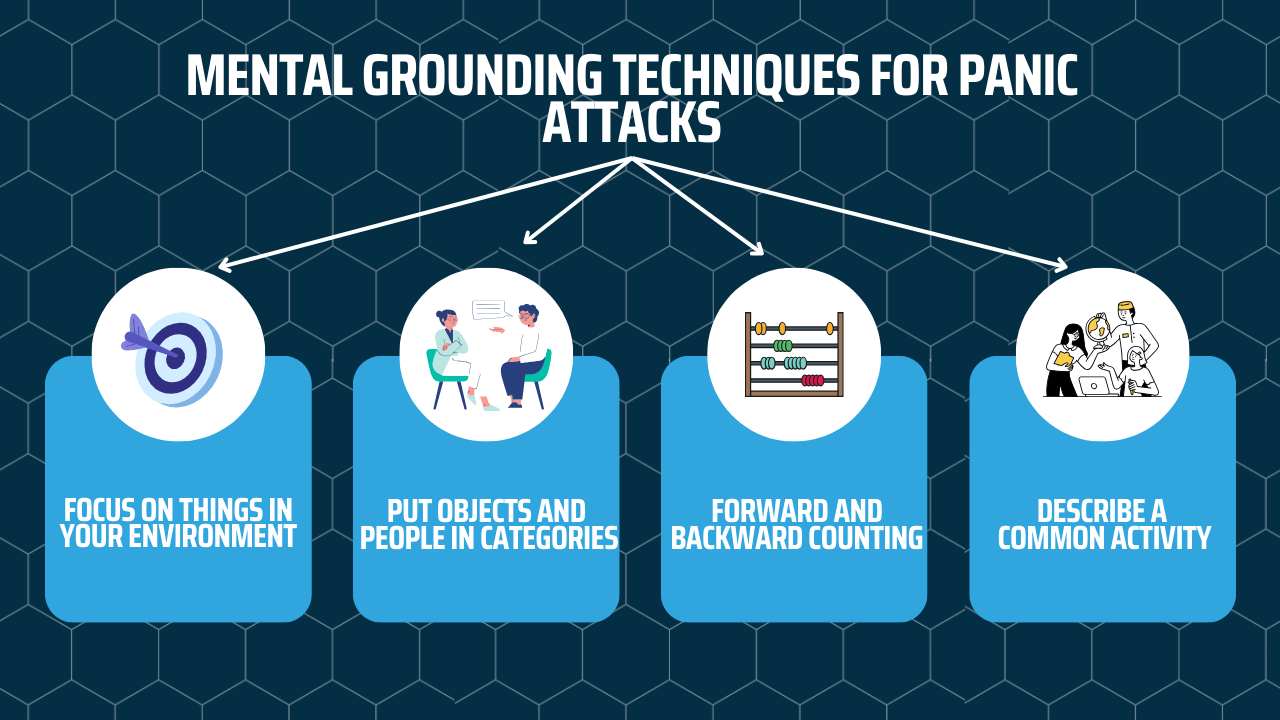
Grounding Techniques for Panic Attacks
Experts estimate that between 15 to 30 percent of people will go through a panic attack over the course of their lifetime. And in the United States, an estimated 11 percent of adults experience a panic attack every year. Although a small minority of the people who have a panic attack end up developing a disorder, these attacks on their own can be a very difficult experience.
Many people report that they ‘felt like they were having a heart attack’ or that they were ‘dying’ when they had a panic attack. Although you won’t be going through a medical emergency, it may feel like it, and you may be unable to ask for assistance. Therefore, mental health experts recommend practicing grounding techniques that can distract you from anxious thoughts and help you focus on the present.
There are different types of grounding strategies you can try, including mental and physical ones. How to ground someone having a panic attack? So, let’s look at a few grounding techniques across different categories.

What is a Panic Attack?
These are short episodes of intense anxiety coupled with physiological sensations like hyperventilation, trembling, increased heart rate, and muscle tension. A panic attack is unrelated to any medical condition, but they can occur frequently. They start quite suddenly and peak within ten minutes or less.
In addition to physiological symptoms, you may also feel like you’re losing control or dying. You may also have strong feelings of anticipation for danger or foreboding. To make it through a panic attack, experts recommend focusing your attention on something besides your own body and symptoms. This involves the use of grounding techniques.
What Are Grounding Techniques?
You can describe them as strategies that help you manage strong emotions, overwhelming thoughts, or anxious feelings. Some examples include deep breathing or focusing on your five senses. Experts at URP Behavioral Health recommend these techniques so you can step away from anxious thoughts and bring yourself back to the present. By practicing these strategies, you can reduce the intensity of negative feelings and potentially avoid harmful coping methods.
Physical Grounding Techniques for Panic Attacks

These physical strategies make use of tangible objects and your five senses to help you navigate through a panic attack and overcome distress.
Touch Items Around You
Whether you’re seated, lying down, or standing, one thing you can do is touch the things around you. This can be anything, like metallic accents on your shoes, the bezel on your watch, or the texture of your jeans.
Run your fingers over the items and focus on their physical characteristics. Do they feel warmer or colder compared to your body? If you’ve picked up the item, try to focus on its weight; does it feel heavy or light in your hand? By channeling your attention into something that’s in front of you, you return to the present moment.
Put Your Hands in Cool and Warm Water
Exposing your body to a sudden change in temperature can take you away from anxious thoughts and bring you back to the present. Placing your hands in warm and then cool water gives you a physical feeling to anchor to. Try focusing on how your hands feel when you put them in warm and then cold water. After that, place your hands in cold and warm water to see if it feels different.
Take a Walk or Exercise
Whether you’re indoors or outdoors, it’s recommended that you get up to take a walk and change your environment if you’re struggling with a panic attack. Talking a walk doesn’t just remove you from an overwhelming environment, but the rhythm of your steps is an effective way to regulate your breathing as well.
Not to mention, moving your body is effective for releasing hormones such as endorphins that improve your mood and relax your body. Studies show that engaging in regular exercise alleviates anxiety over time.
Take Deep Breaths
If you seek professional treatment for your panic attacks, it’s likely that your therapist will teach you exercises to regulate your breathing. One way to do this is to take a slow and deep breath through your nose. Then, take a deep breath out of your mouth. If you’re struggling with deep breathing, it helps to count from 1 to 5 between each time you breathe in and breathe out.
Apply Gentle Pressure
Applying gentle pressure refers to deep pressure stimulation, which involves the use of a firm touch to calm your nervous system. A review of different studies involving the use of weighted blankets for the treatment of anxiety shows that they can be useful in applying deep pressure. Using a weighted blanket is a good example of applying deep pressure to your body.
Slowly Sip on the Water
Try taking small sips of cool water or some other chilled beverage and focus on how it tastes. Drinking a chilled beverage allows you to concentrate on the feeling of it moving down your throat. As you do that, you’ll be distracted from anxious thoughts that make you panic.
Mental Grounding Techniques for Panic Attacks

Other methods involve using mental distractions that divert your attention from anxious thoughts and toward the present moment. During a panic attack, you may be focused on physical sensations like your increased heart rate, shortness of breath, and muscle tension.
Such sensations feed into your anxiety and prevent you from calming down. By practicing these mental panic attack grounding techniques, you’ll think about something else so your body can relax.
Focus On Things In Your Environment
Look at the objects in your environment and describe them. Pick one object at a time and describe it in detail before moving to the next. So, if you’re looking at a couple of chairs, describe their color, how many there are, and the material you think they’re made of.
Put Objects and People in Categories
You can distract yourself from your panic attack symptoms by coming up with different categories and naming things that go in said categories. Let’s say you come up with a category like dog breeds. Then, you’ll name dogs that fall in these categories, like a golden retriever, blue heeler, pit bull terrier, Pomeranian, Siberian husky, Samoyed, etc. As you try to think of things and objects that fall into a category, you distract yourself from the panic attack symptoms.
Forward and Backward Counting
Research shows that panic attacks have a pathophysiological model that includes a positive feedback loop. This loop comprises bodily sensations and your anxious reaction to these symptoms. As you continue thinking about your symptoms, you keep feeling anxious. Counting forward or backward diverts your attention away from the symptoms you’re experiencing.
Describe a Common Activity
Think of a routine activity that you can do very well, like preparing your coffee in the morning. Now, try visualizing the activity so you can describe it in detailed steps. Think about how much coffee, cream, and sugar you add to your mug and how it feels warm in your palm when you take a sip.
Comforting Grounding Techniques for Panic Attacks
If your panic attack is the result of anxious thoughts, you can try navigating through these feelings by seeking comfort from a loved one or your furry friends. Being in the company of someone you’re close to is a great way to distract yourself.
Cuddle With Your Pet
Studies suggest that pets like dogs and cats can detect when their humans are stressed and unlike their usual selves. Petting and stroking your pet won’t just make them happy, but studies show that it triggers the release of endorphins in the brain. Also, it gives you a chance to focus on their markings, the color of their fur, or the shape of their nose – physical traits that keep you grounded in the present,
Talk To a Friend
You can also call a friend to provide support while you navigate difficult panic attack symptoms. They can engage you in conversation as a way to distract you from your symptoms. This includes asking you mundane questions like what you had for breakfast or talking about the weather. They can also practice breathing exercises with you to help you calm down.

Seeking Treatment for Panic Disorder
While panic attacks can affect a large chunk of the population at some point, panic disorders have a lower prevalence. These are characterized by frequent panic attacks and a pervasive fear of experiencing an unexpected panic attack.
How Inpatient Treatment Can Help
If you have a history of panic attacks, are consistently worried about when you’ll get the next one, and avoid having a routine because of this fear, it’s best to seek professional treatment. Although grounding techniques are quite helpful in reducing the intensity of panic attack symptoms, evidence-based treatments provide an opportunity for long-term recovery.
With therapeutic interventions, you can prevent the stream of anxious thoughts that potentially result in a panic attack. At inpatient treatment centers like URP Behavioral Health, one of the most common therapies is CBT. It involves spotting unhelpful thought patterns that result in panic attacks and changing them.
Conclusion
Panic attacks are brief episodes of intense anxiety and physiological sensations that trigger fear. When you go through a panic attack, certain grounding techniques bring you back to the present by taking your attention away from anxious thoughts. There are different types of grounding techniques, including physical and mental strategies, that include tangible objects and mental processes, respectively. Though these techniques can be quite effective, seeking professional help is crucial for long-term recovery if you experience recurring panic attacks.

